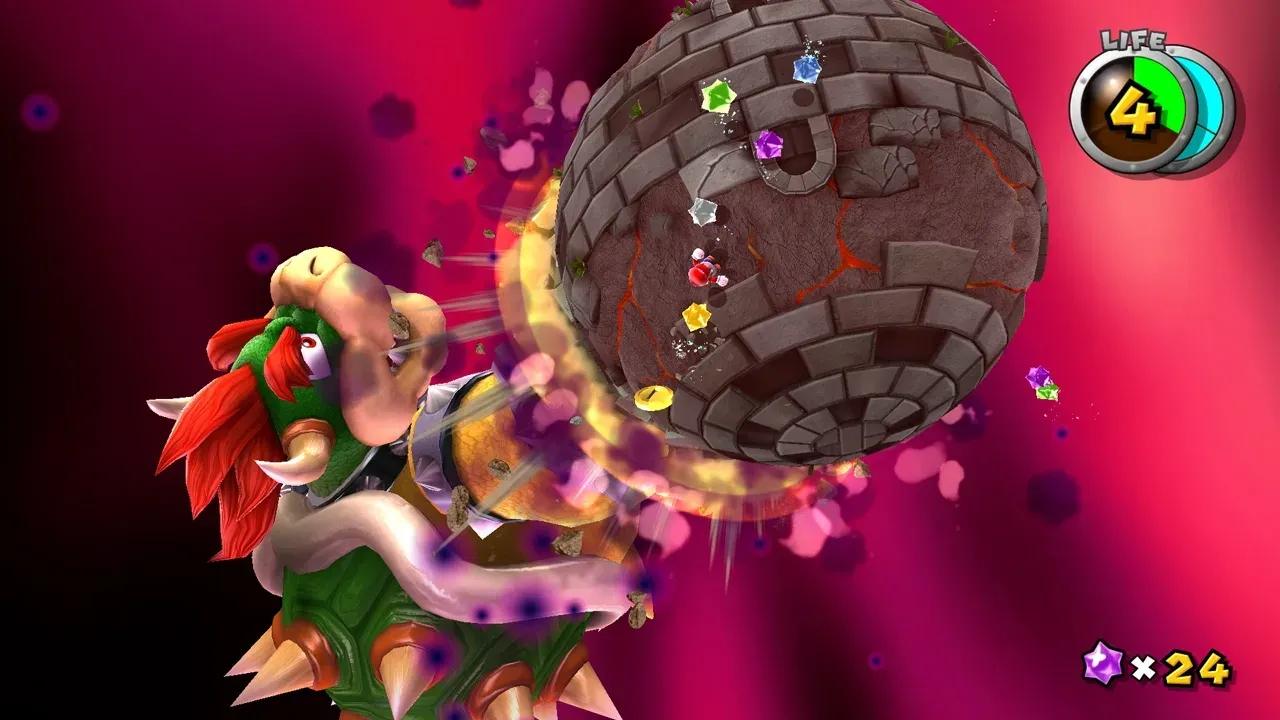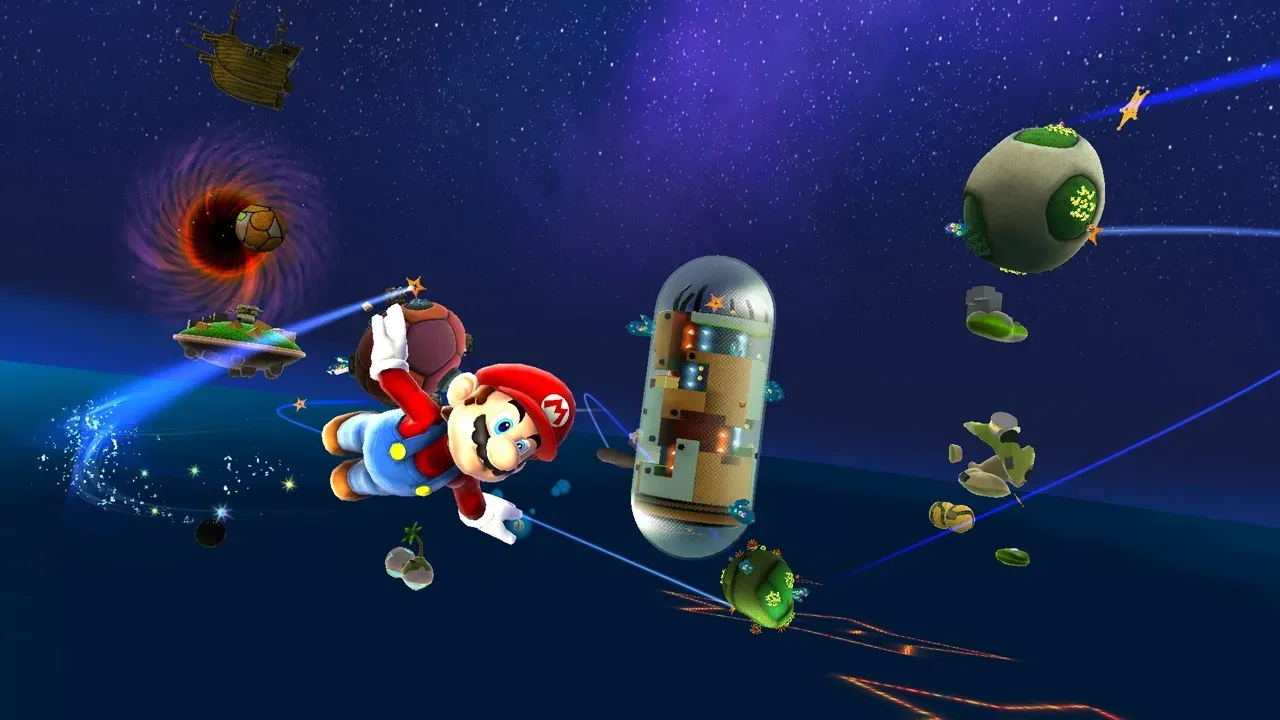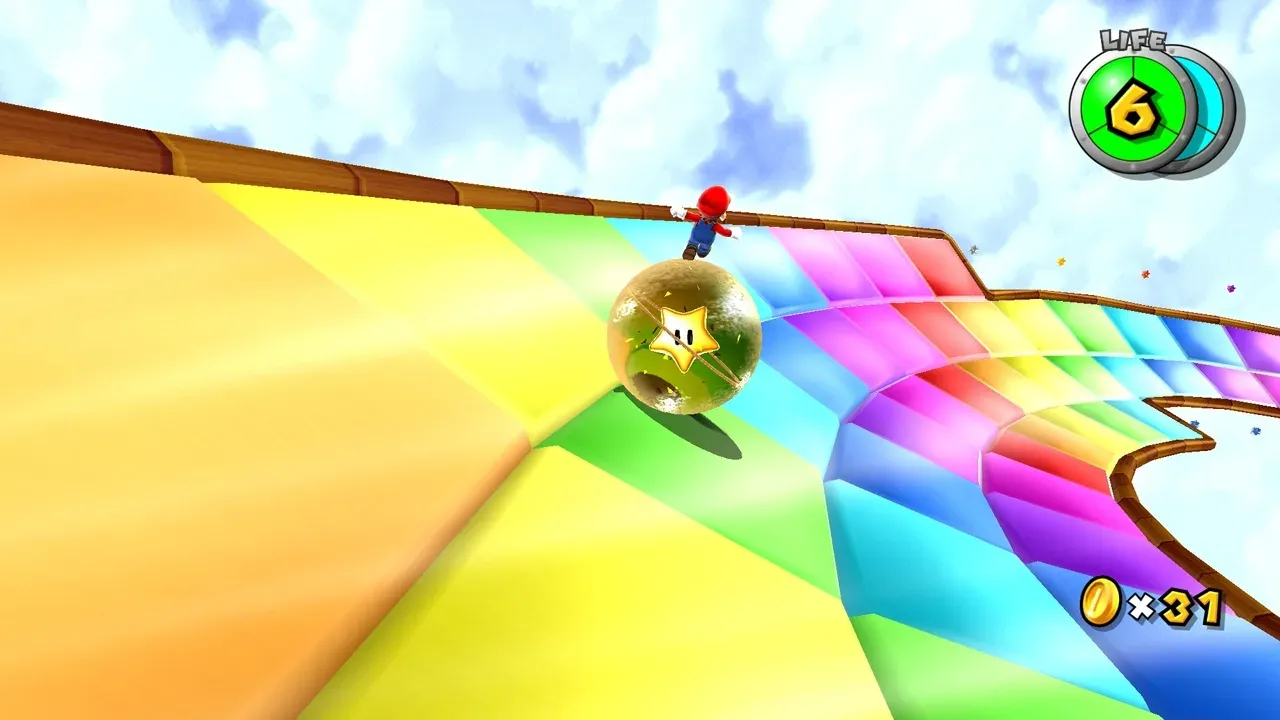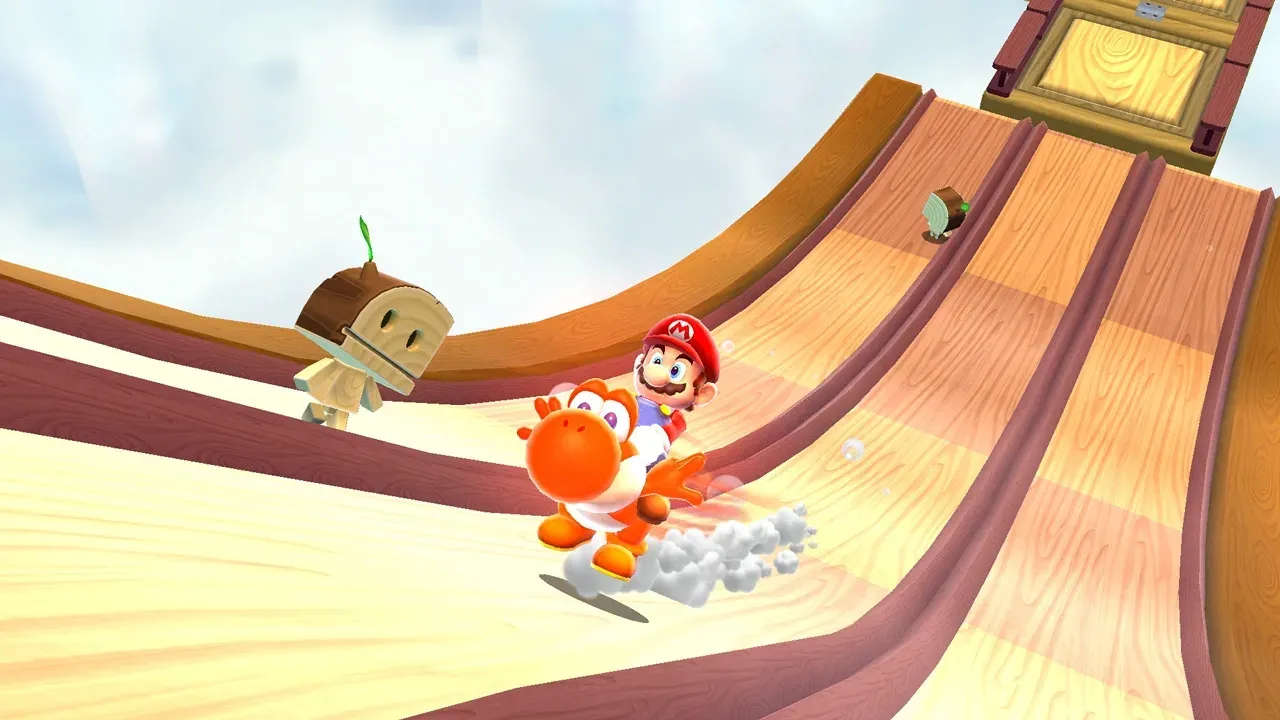Distributor provided a review copy.
A cynical person might scoff at the idea of another Wii-centric re-release of Mario titles, especially since we already saw Super Mario Galaxy included in the odd limited time release of Super Mario 3D All-Stars Collection a few years ago, which is now out of print. Is this just another double-dip from Nintendo geared at those with fear of missing out on their favorite plumber's classic adventures?
I'd argue that, for the most part, the answer is no. Super Mario Galaxy 1 + 2 does just enough to justify its existence, even if you were one of the few who managed to snag the previous collection when it came out.
Also – even more weirdly – Super Mario Galaxy has visual upgrades included here that weren't present in the previous version. Which means this is now the essential release, making the earlier timed exclusive even more of an oddity. Nintendo moves in mysterious ways.

On a technical level, neither Mario Galaxy title has ever looked or played this good. On the Switch 2, we get 4K resolution and 60fps all the way down the line. For two titles pushing the 20 year anniversary mark, it's astounding how beautiful they still are. Thanks to some lovingly crafted remastering and timeless art direction, both Mario Galaxy titles have aged gracefully.
I tested both games in the docked mode with both a Switch 2 Pro controller and the Joy Cons, and while there are numerous quality of life upgrades in this release, it's clear Nintendo has no interest in moving away from the traditional control scheme introduced on the Wii. While you technically can play the game on the Pro controller, it's really not recommended.
Most of the fun still requires the Joy Cons to master Mario's expansive move set and to get the most out of the superbly designed levels. Mario can now collect and "shoot" fallen star pieces, which are controlled entirely through the gestures on the Joy Con. On a Pro controller, you'll have to move the entire device around, which isn't as fun when you're clasping it with both hands in front of you.
Luckily, the Joy Cons themselves are perfectly fine. In fact, compared to how the Wii used to be, they're light years ahead in design and comfort. I love the Wii and still play it to this day, but even I'll be first to admit the Wii-mote was not the most ergonomic device ever created.
As an added bonus, both Galaxy titles include a co-op assist mode, which is perfect for couples and those with younger family members who want to join in on the fun. Basically, it means they become the star pointer, allowing for one player to focus on the platforming while they attack enemies, collect items, and engage with the environment. It's not a full two-player mode by any means, but it's just enough of engagement that it feels meaningful as an addition.

Out of the two Galaxy titles, it's not exactly a hot take to say the second one is the one I'd prefer. While the first one should be praised for introducing the spherical world exploration, which is still the biggest innovation Mario has seen, it's the second part that really pushed the boundaries of what a 3D Mario title could become. This is where you can find the seeds that would grow into Super Mario Odyssey, and they're still as fun as ever.
In fact, your favorite will boil down to which aspects you place a greater emphasis on. The first one has the better story, and it introduces Rosalina, one of the biggest fan favorites in recent memory. The second one is tighter, more gamified, and features Yoshi. The first is more sombre in tone, despite the silliness, and Rosalina's expanded storybook, which details her and the galaxy's history, is even sadder this time around. The second is an expansion on the wild and wacky wonder of the world, it has no time to slow down for anything but the joy of discovery.
There's also a ton of stuff to do in both games, be it collecting rogue stars or solving every puzzle that comes your way, we're talking easy 100 hour plus completion times if you end up doing everything.

There are some complaints. Not many, but they exist. As ever with Nintendo titles, both old and modern, the Japanese giant is still slow to get into accessibility. In both titles, we get the bare minimum, meaning some control adjustments and that's about it. Nothing for vision, and certainly nothing to ease with physical impairments.
We didn't get anything in the previous Mario collection, either, and I doubt Nintendo has plans to change. They've always been slow about these things, and it's one of the bigger shames in gaming. There are entire generations who've become gamers thanks to the Switch, and many of them would love to play Mario on their own terms, just to experience the incredible worlds and mechanics devised by some of the best game designers in history.
To date, they can only do so intermittently and with numerous caveats.

On top of the accessibility complaints is the price. For Nordic audiences, Super Mario Galaxy 1 + 2 costs a whopping 70 Euros. For reference, Super Mario 3D All-Stars, which included three major titles, was 60 Euros. Even with the quality of life improvements and the visual upgrades, it's a tough sell. This is, after all, a re-release.
And yet, despite those issues, I would warmly recommend Super Mario Galaxy + Super Mario Galaxy 2. They are two of the best games in the Mario franchise, and some of the best platformers ever made. They've barely aged in the past two decades, and feel just as innovative and joyous as they did on the original Nintendo Wii.
For those who've never played them, they'll feel like a revelation, even when compared to newer, fancier titles. For everyone else, it's like coming back home.










